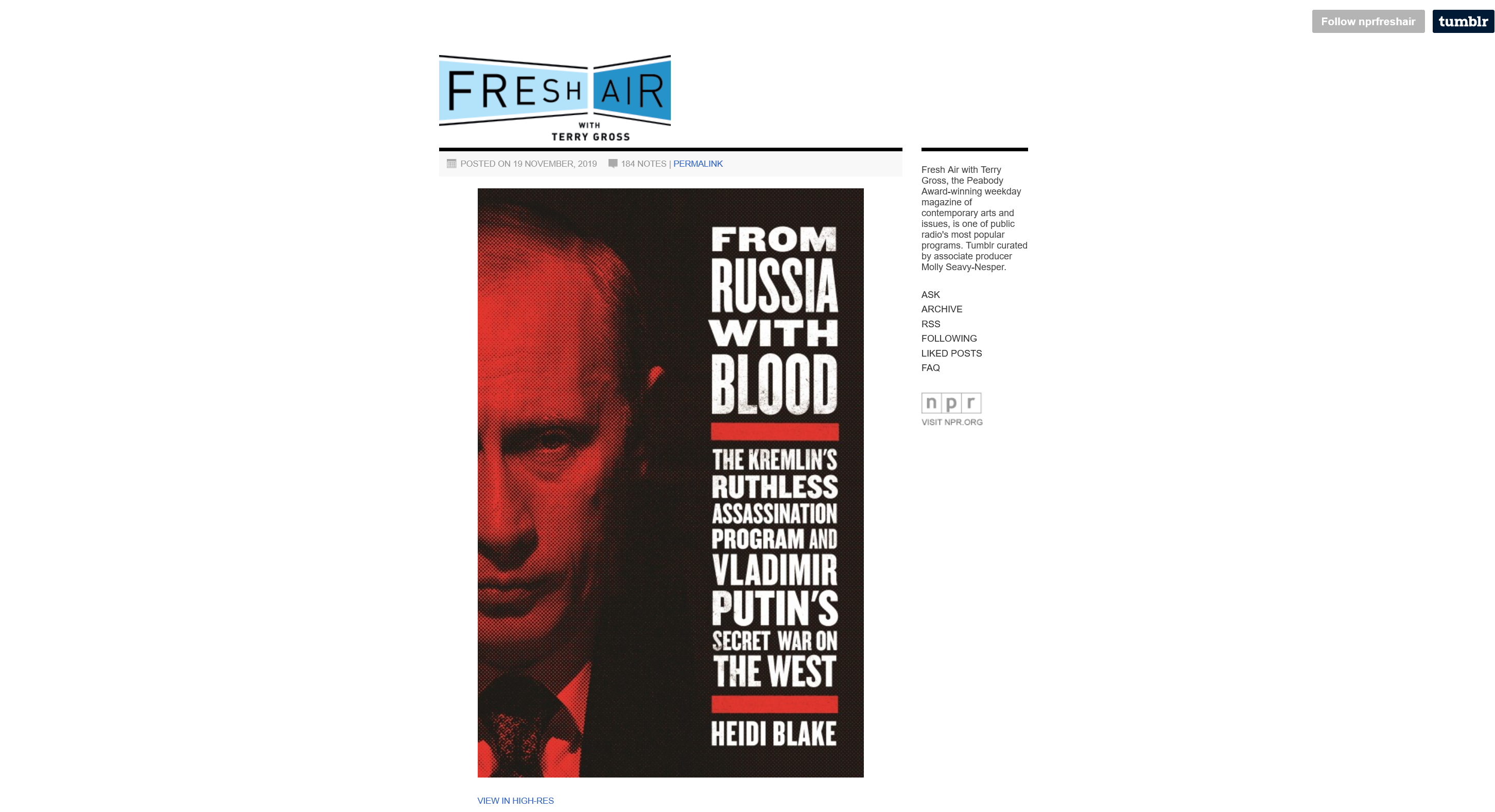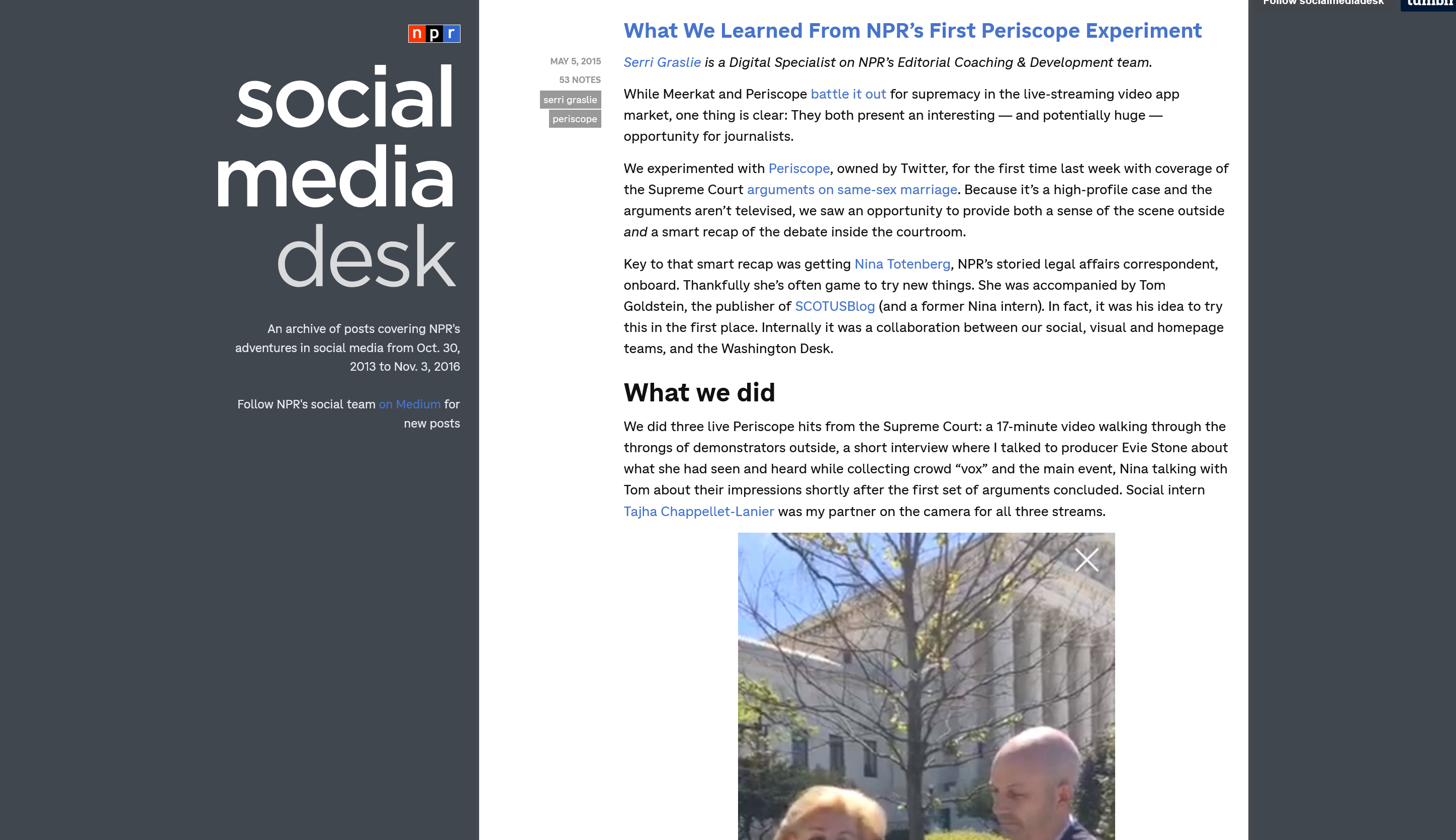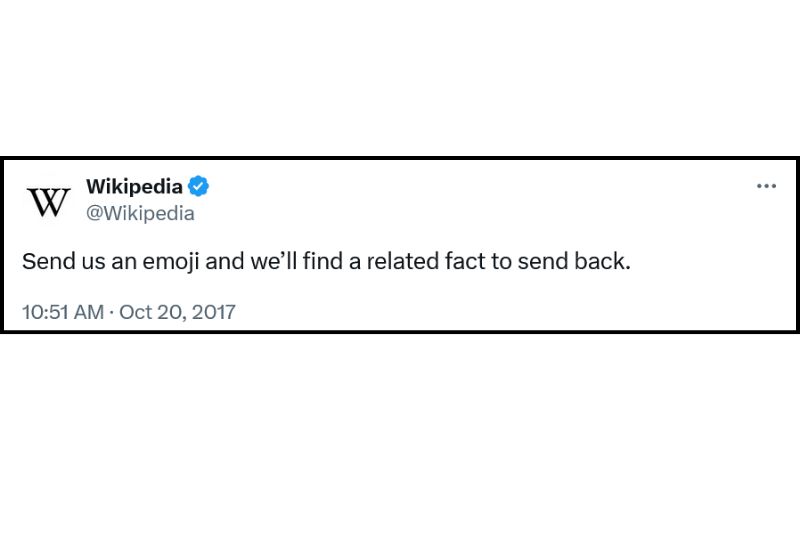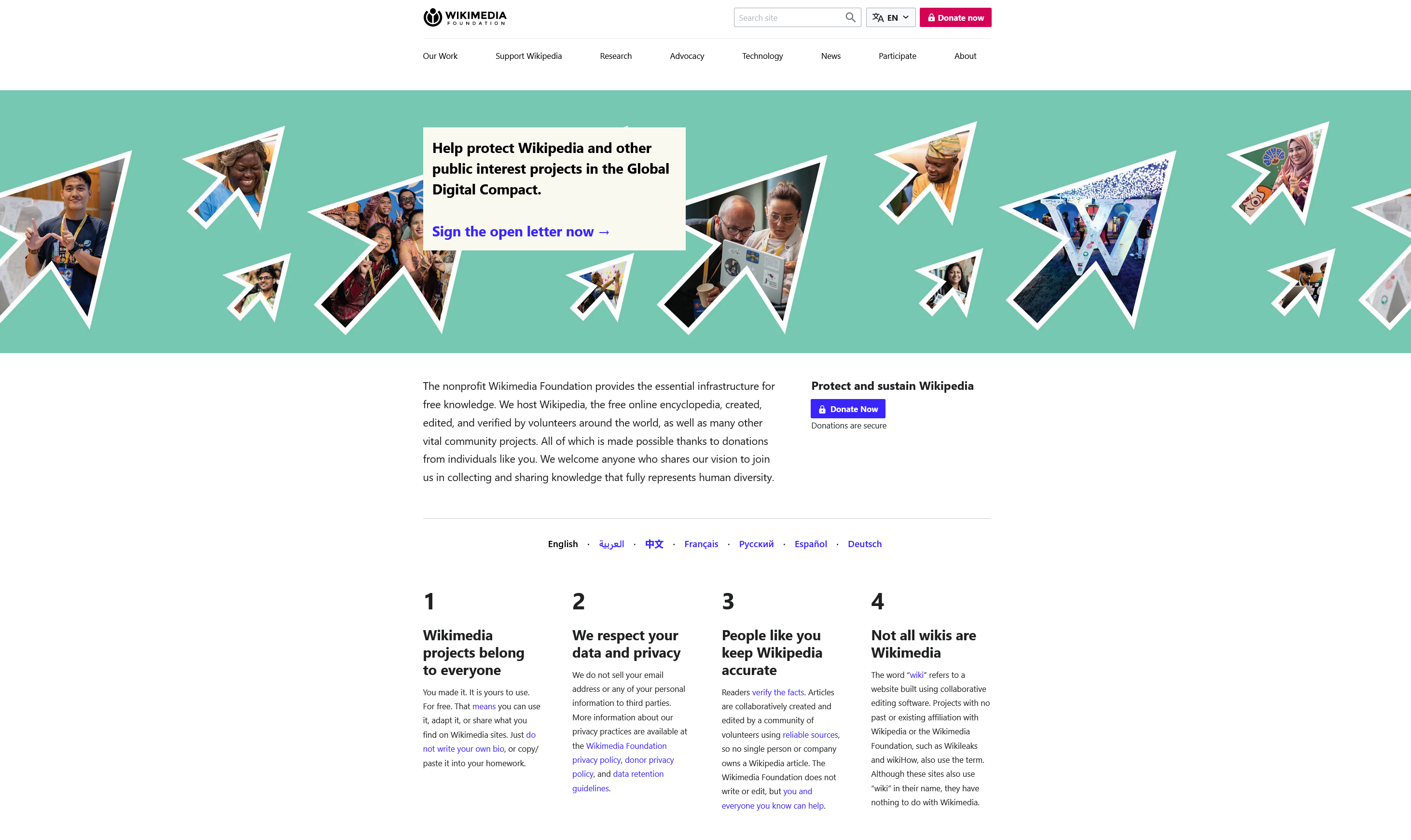Social media strategy
Connecting mission-driven organizations with existing and future audiences
Fresh Air with Terry Gross
Role: Director of digital and social strategy
I joined Fresh Air as their first web producer and designed a robust social strategy around the idea of "me as tour guide." That is, I would act as a conduit for everyone in the world who didn't have access to Terry Gross on a daily basis. Every day I would share the work that went into our broadcasts - using Tumblr, Twitter, Facebook, and Soundcloud - and use whatever medium or method best suited that day's guest.
Nieman Lab profiled my efforts and strategy, noting that "unique visitors in January 2012 grew by 40 percent over the year before — twice as fast as NPR’s flagship news programs, Morning Edition and All Things Considered — according to Sondra Russell, a senior digital analyst at NPR. Uniques grew by 60 percent over January 2010, the month Kramer started. Today the Fresh Air website attracts roughly 1 million people per month."

Wait Wait...Don't Tell Me
Role: Producer, editor, and writer
I was a radio producer and writer at Wait Wait - but with a relatively small staff, we all wore many hats. Thus, in 2007, I created a Facebook page for Carl Kasell, our late co-host. It seems quaint now, but at the time, it was a groundbreaking way for a show to communicate with fans. "Carl" would reveal guests and backstage photos, as well as promote other NPR broadcasts. Our intergenerational social media strategy was written up in the New York Times, and mimicked by many other brands.
NPR Social Media Desk
Role: Creator and lead writer
The social media desk began as an email list for NPR bosses and staff members, highlighting experiments on social media taken by the newsroom and offering kudos to staff members who used platforms in their reporting or research. It became an invaluable resource as it morphed into the newsroom sharing back interesting experiments or resources that other newsrooms were using, which were then shared back out to our newsroom.
We also praised people across the spectrum: a reporter trying out Twitter for the first time was equally praised as someone who had done something much more advanced.
And then we made it public, and the Social Media Sandbox became a resource for newsrooms, non-profit organizations, and even the federal government - I was invited to speak at the State Department about it. At peak, we had over 30,000 readers - this write-up by Jay Rosen of NYU gives an overview of the strategy and methods we used.

Wikipedia social media
Role: Led social media team and designed campaigns
Wikipedia is the fifth largest website in the world - almost everyone connected to the internet comes across it. Designing a social media strategy was challenging: there are many audiences, in many different languages, with many different use cases. The Foundation runs some accounts, others are run by volunteers.
Building a social strategy started with basic research: How many accounts? Who runs them? Does the Foundation have access? What language(s) are they in? What platforms?
After that, we focused on several key audiences: journalists, people who read but had never edited the encyclopedia, funders, and researchers.
A highlight: the August 2017 solar eclipse campaign. Using social media, the blog, traditional media, workshops, partners, and paper flyers, we designed a successful campaign to help people deposit their solar eclipse photos into Wikimedia for anyone to use. Over 2,300 people learned to upload photos and about Creative Commons licensing.
Another campaign focused on revealing the editors behind the encyclopedia. Profiling Jess Wade, a physicist who focused on writing Wikipedia articles about women working in science and technology, led to her work being featured by news organizations around the globe.


